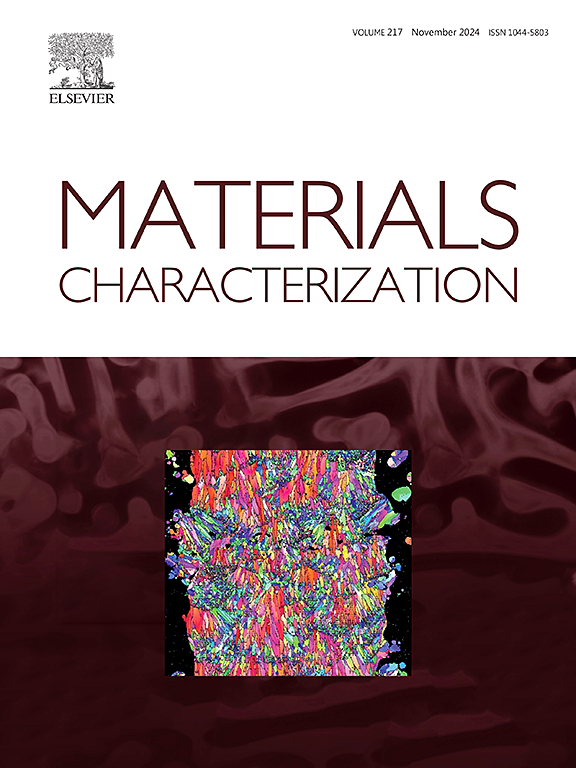Achieving ultra-high strength, good toughness and cost reduction in secondary hardening steel via dual precipitation
IF 4.8
2区 材料科学
Q1 MATERIALS SCIENCE, CHARACTERIZATION & TESTING
引用次数: 0
Abstract
The dual precipitation of NiAl particles and M2C carbides during ageing plays a critical role in achieving an optimal balance of strength and toughness in low-cobalt secondary hardening steel, yet this remains scarcely investigated. This work investigates the evolution of NiAl and M2C during ageing at 482 °C for durations ranging from 1 h to 150 h, focusing on their influence on the strength and impact toughness of martensitic steel. It was found that after 5 h of ageing, NiAl particles nucleate rapidly with high number density and nearly reaches saturation, suppressing dislocation recovery. This leads to a high yield strength of 1875 MPa. When the ageing time is extended to 32 h, the NiAl particles coarsen and the volume fraction of M2C carbides increases, while the dislocation recovery remains minimal. Consequently, the yield strength increases slightly to 1895 MPa. Notably, the impact toughness improves from 17 J at 5 h to 28 J at 32 h, reflecting to a 65 % improvement. This is predominantly due to the reduction in the number density of brittle NiAl particles which can induce cracks and due to the formation of film-like reversed austenite which can deflect cracks. After 32 h of ageing, the yield strength and impact toughness of the secondary hardening steel are comparable to those of commercial AerMet310 steel. Notably, the cobalt content is reduced from 15.0 wt% to 5.0 wt%, resulting in an approximate 36 % reduction in raw material costs.
求助全文
约1分钟内获得全文
求助全文
来源期刊

Materials Characterization
工程技术-材料科学:表征与测试
CiteScore
7.60
自引率
8.50%
发文量
746
审稿时长
36 days
期刊介绍:
Materials Characterization features original articles and state-of-the-art reviews on theoretical and practical aspects of the structure and behaviour of materials.
The Journal focuses on all characterization techniques, including all forms of microscopy (light, electron, acoustic, etc.,) and analysis (especially microanalysis and surface analytical techniques). Developments in both this wide range of techniques and their application to the quantification of the microstructure of materials are essential facets of the Journal.
The Journal provides the Materials Scientist/Engineer with up-to-date information on many types of materials with an underlying theme of explaining the behavior of materials using novel approaches. Materials covered by the journal include:
Metals & Alloys
Ceramics
Nanomaterials
Biomedical materials
Optical materials
Composites
Natural Materials.
 求助内容:
求助内容: 应助结果提醒方式:
应助结果提醒方式:


